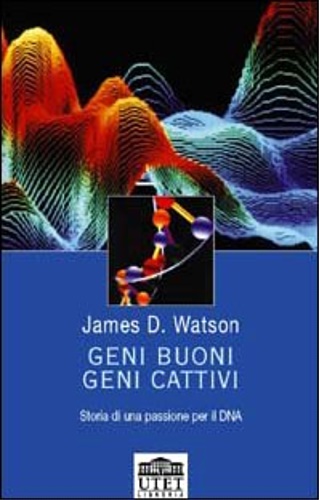 Watson,James D.
Geni buoni, geni cattivi. Storia di una passione per il DNA.
Watson,James D.
Geni buoni, geni cattivi. Storia di una passione per il DNA.
Introduzione e postfazione di Walter Gratzer. Torino, UTET
2004,
cm.15x23,5,
pp.XVIII,244,
brossura copertina figurata a colori.
Nel 1959, la scoperta della struttura molecolare del DNA, l'elegante "doppia elica", archivio e trasmettitore delle informazioni genetiche di quasi tutti gli organismi viventi, portò alla ribalta due giovani ricercatori dell'Università di Cambridge: James D. Watson e Francis Crick. Negli ultimi trent'anni, Watson ha dato un contribuito molto significativo alla divulgazione dei progressi scientifici d'interesse pubblico. Dalla lotta contro il cancro alle tecniche del DNA ricombinante, al Progetto Genoma Umano, i temi affrontati nei suoi scritti hanno il grande merito di essere un lucido tentativo di indirizzare il futuro della scienza verso il miglioramento della condizione umana, e le pagine raccolte in questo libro ne sono la testimonianza. I suoi interventi, in particolare quelli sulle implicazioni etiche della manipolazione genetica, hanno talora sollevato dispute veementi alle quali Watson, fiero oppositore di una biologia senza regole, non si è mai sottratto. Testimone diretto di un periodo di conquiste straordinarie, quest'uomo irriverente e coraggioso ci parla di sé, delle sue scoperte e di una scienza in parte già colonizzata da logiche industriali, con rigore e pacatezza, e con quel raro dono, la fiducia consapevole, che soltanto i grandi scienziati mostrano di possedere.
EAN:
9788877507556
Nuovo